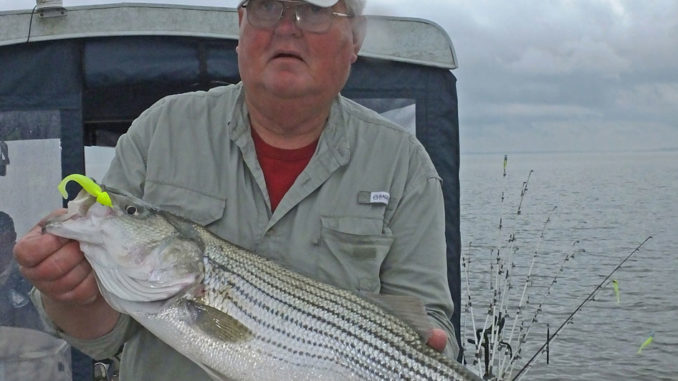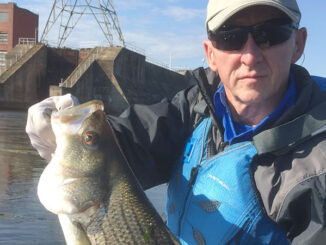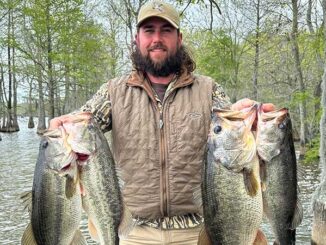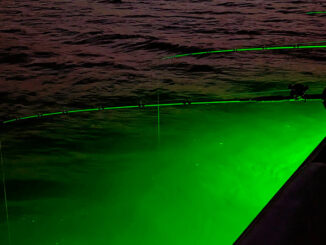
Guide Linwood Thornhill said his goal is to get some distance between his boat and others chasing stripers when possible. His experience has taught him that a thoughtful and isolated approach to the schooling action is best.
“Of course, if a school of fish blows up close to me, that’s where I’m going,” he said. “But a lot of times, active schools of fish will surface for a couple minutes, then sound, only to pop up again a couple hundred yards away.
“Depending on the location this may draw a crowd of boats, and if others don’t crowd the fish, the action remains good. But that’s when I use my binoculars to scan long distances searching for isolated schools of surface-feeding fish, far away from a crowd of boats. When I see that, I’ll ease away from the mob and go to them. I’ve found if I can get on a school by myself, we’ll generally catch more and larger fish.”
Thornhill said he’ll look at the open-water, mid-lake areas of Lake Moultrie, and often, he’ll find fish schooling on lower Lake Marion hidden by islands or trees.
“I don’t leave schooling fish to look for other schools unless I see the birds working them,” he said. “But I do keep a close watch for other activity. This is a good practice anyway, because the school I’m working can shut off at any given time, and sometime, I’ll already have a backup or two in mind when it does.”





Be the first to comment